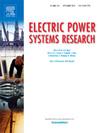Enhancing synchronization stability: Adaptive PLL implementation using double internal loop RNN in type-3 wind power systems
IF 3.3
3区 工程技术
Q2 ENGINEERING, ELECTRICAL & ELECTRONIC
引用次数: 0
Abstract
Doubly fed induction generators (DFIG)-based wind turbines (WTs) are prevalent in modern power grids. However, they often encounter synchronization issues when connected to weak grids. Synchronization instability primarily arises from controller dynamics, particularly during a phase-locked loop (PLL) interface with a voltage source converter. This study investigates the influence of PLL control gains on grid synchronization and the characteristics of power system oscillations induced under weak grid conditions. Based on this analysis, a novel adaptive double internal loop recurrent neural network (DILRNN) is employed to adjust the PLL gains dynamically under various system conditions. A dynamic back-propagation learning algorithm is utilized to fine-tune the weights of the DILRNN. Moreover, dynamic (adaptive) learning rates are selected using the Lyapunov stability method to ensure faster convergence and enhance the stability of the control scheme. The effectiveness of the proposed controller is validated under varying wind speeds, grid disturbances, faulty conditions, and torsional interactions resulting from the interplay between DFIG-based wind power systems and synchronous generators. A controller hardware in Loop (CHIL) simulation using OPALRT is conducted to demonstrate the efficacy of the proposed DILRNN-tuned PLL in enhancing synchronization stability. The findings showed that the adaptive PLL achieved an 80% reduction in power fluctuations and a 78% decrease in voltage variations under severe fault conditions as compared to those using conventional PLL designs.

增强同步稳定性:利用双内环RNN在3型风力发电系统中实现自适应PLL
基于双馈感应发电机(DFIG)的风力涡轮机(WTs)在现代电网中非常普遍。然而,当连接到弱电网时,它们经常遇到同步问题。同步不稳定性主要是由控制器动力学引起的,特别是在锁相环(PLL)与电压源转换器的接口期间。本文研究了锁相环控制增益对电网同步的影响以及弱电网条件下电力系统振荡的特性。在此基础上,提出了一种新的自适应双内环递归神经网络(DILRNN),用于在不同系统条件下动态调整锁相环增益。采用动态反向传播学习算法对DILRNN的权值进行微调。此外,采用Lyapunov稳定性方法选择动态(自适应)学习率,以保证更快的收敛速度,增强控制方案的稳定性。在不同的风速、电网干扰、故障条件以及由基于dfig的风力发电系统与同步发电机之间的相互作用引起的扭转相互作用下,验证了所提出控制器的有效性。利用OPALRT进行了控制器硬件在环(CHIL)仿真,证明了所提出的dilrnn调谐锁相环在提高同步稳定性方面的有效性。研究结果表明,与使用传统PLL设计相比,自适应PLL在严重故障条件下实现了80%的功率波动减少,78%的电压变化减少。
本文章由计算机程序翻译,如有差异,请以英文原文为准。
求助全文
约1分钟内获得全文
求助全文
来源期刊

Electric Power Systems Research
工程技术-工程:电子与电气
CiteScore
7.50
自引率
17.90%
发文量
963
审稿时长
3.8 months
期刊介绍:
Electric Power Systems Research is an international medium for the publication of original papers concerned with the generation, transmission, distribution and utilization of electrical energy. The journal aims at presenting important results of work in this field, whether in the form of applied research, development of new procedures or components, orginal application of existing knowledge or new designapproaches. The scope of Electric Power Systems Research is broad, encompassing all aspects of electric power systems. The following list of topics is not intended to be exhaustive, but rather to indicate topics that fall within the journal purview.
• Generation techniques ranging from advances in conventional electromechanical methods, through nuclear power generation, to renewable energy generation.
• Transmission, spanning the broad area from UHV (ac and dc) to network operation and protection, line routing and design.
• Substation work: equipment design, protection and control systems.
• Distribution techniques, equipment development, and smart grids.
• The utilization area from energy efficiency to distributed load levelling techniques.
• Systems studies including control techniques, planning, optimization methods, stability, security assessment and insulation coordination.
 求助内容:
求助内容: 应助结果提醒方式:
应助结果提醒方式:


